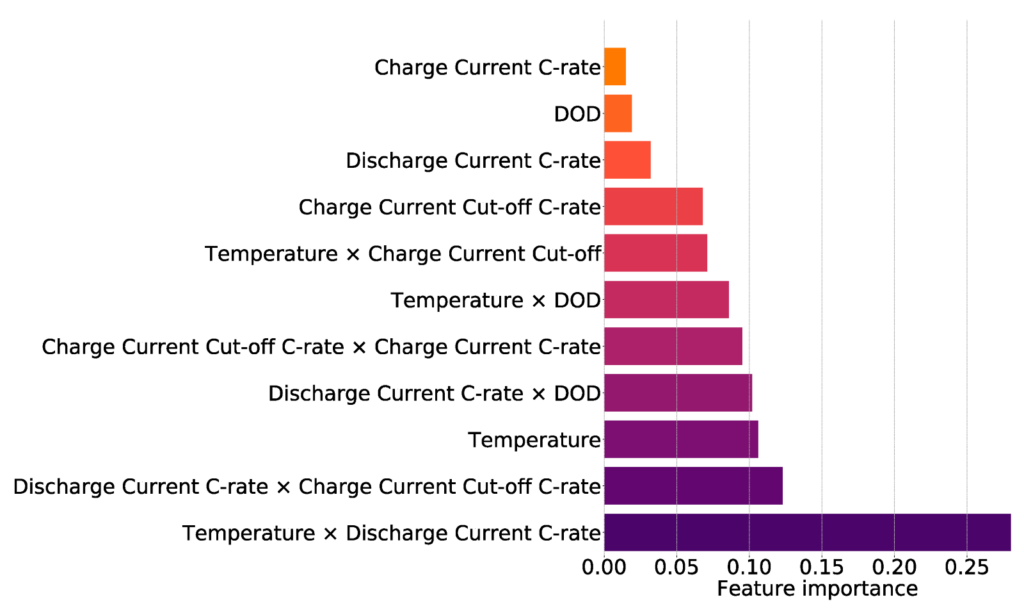In addition to the chemistry and use of the BESS, it is also important to consider which factors can cause the system to last longer and which factors will cause the system to age more quickly. Temperature, the rate at which the system is cycled (C-rate), the storage SOC, and the depth of discharge (DOD) when cycling can all impact the rate of battery degradation.
We’ll discuss the ideal state for these stressors and some practical ways to manage this. Temperature can be greatly affected by region, and in regions with extreme temperatures, temperature control may be harder or more costly. In these situations, refer to the Available Technologies section for technologies that are more stable in extreme conditions.
Main Points
- When considering a BESS, it’s important to consider how you plan to operate it — specifically the temperature, SOC during storage, DOD during cycling, and the C-rate of cycling.
- Temperature is one of the most important stressors on battery health. At high temperatures, the battery degrades faster — so if planning to operate at extreme temperatures (below 10°C or above 60°C), consider a thermal management system. A battery will heat up during high use times, so if operating near the upper limit, a thermal management system may also be necessary.
- Maintaining a battery between 20% and 80% SOC can be beneficial for battery health.
- Larger DODs during cycling will cause faster aging, so consider applications in which you can have a steadier SOC with less DOD when cycling.
First, Consider This
There have been numerous articles published on how temperature, DOD, SOC, and C-rate can affect battery degradation, but the mathematics and science behind this can be overwhelming to process at first. Exro Technologies, a Canadian-based power electronics company, published the following graphic (Figure 5) as a digestible representation and reminder of some of the key stressors to control when considering a BESS.

Next, Read This
In the introduction to “Life Prediction Model for Grid-Connected Li-ion Battery Energy Storage System” by Kandler Smith et al., the following excerpt summarizes the importance of temperature on battery aging. The full article can be a useful tool for someone looking to develop a model to predict the lifetime of their battery.
“While it is common to discuss Li-ion lifetime in terms of number of cycles, often the calendar life of the cell is more limiting than cycle life. Detrimental side reactions occur within the cell even during storage. The rate of these deleterious side reactions increases with high temperature and high SOC.”
Excerpt from page 1 of https://www.nrel.gov/docs/fy17osti/67102.pdf
Now, Consider This
“Lithium-Ion Battery Life Model with Electrode Cracking and Early-Life Break-in Process” by Kandler Smith et al. also models battery lifetime. In this article, 30 cells are cycled or stored at various conditions (Figure 6). The storage cells are depicted in shades of red; cells that were cycled are in shades of blue. As the hue increases, so does the temperature for the storage cells. For the cycling cells, as the hue increases so does the DOD. The image is structured this way to draw your attention to the significant stressor at each condition. In general, as the temperature of the storage cell increases so does the degradation, and as the DOD of the cycling cell increases so does the degradation. What we can learn from this image is that it is better to store cells that are staying stationary at lower temperatures — and when the cell is cycled, it is best to cycle it within a smaller range.

Finally, Consider This
Saurabh Saxena et al. published “Battery Stress Factor Ranking for Accelerated Degradation Test Planning Using Machine Learning” in which they ranked the contributions of different stressors (Figure 7). The combinatorial effects of some stressors are shown to be quite high, but from single stressors we see just how important temperature can be to battery aging. This should highlight the fact that if considering a BESS, having a proper thermal management system is a necessity.


